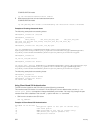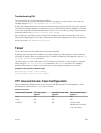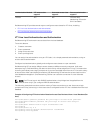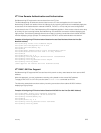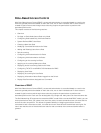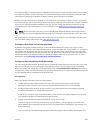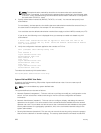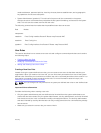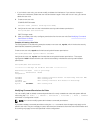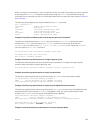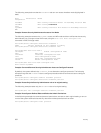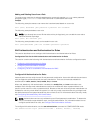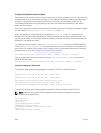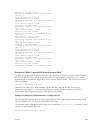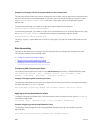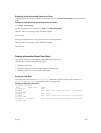
• If you inherit a user role, you cannot modify or delete the inheritance. If you want to change or
remove the inheritance, delete the user role and create it again. If the user role is in use, you cannot
delete the user role.
1. Create a new user role
CONFIGURATION mode
userrole name [inherit existing-role-name]
2. Verify that the new user role has inherited the security administrator permissions.
Dell(conf)#do show userroles
EXEC Privilege mode
3. After you create a user role, configure permissions for the new user role. See Modifying Command
Permissions for Roles.
Example of Creating a User Role
The configuration in the following example creates a new user role, myrole, which inherits the security
administrator (secadmin) permissions.
Create a new user role, myrole and inherit security administrator permissions.
Dell(conf)#userrole myrole inherit secadmin
Verify that the user role, myrole, has inherited the security administrator permissions. The output
highlighted in bold indicates that the user role has successfully inherited the security administrator
permissions.
Dell(conf)#do show userroles
************* Mon Apr 28 14:46:25 PDT 2014 **************
Authorization Mode: role or privilege
Role Inheritance Modes
netoperator
netadmin Exec Config Interface Router IP Route-map Protocol MAC
secadmin Exec Config Line
sysadmin Exec Config Interface Line Router IP Route-map
Protocol MAC.
myrole
secadmin Exec Config Line
Modifying Command Permissions for Roles
You can modify (add or delete) command permissions for newly created user roles and system defined
roles using the role mode { { { addrole | deleterole } role-name } | reset } command
command in Configuration mode.
NOTE: You cannot modify system administrator command permissions.
If you add or delete command permissions using the role command, those changes only apply to the
specific user role. They do not apply to other roles that have inheritance from that role. Authorization and
accounting only apply to the roles specified in that configuration.
830
Security



